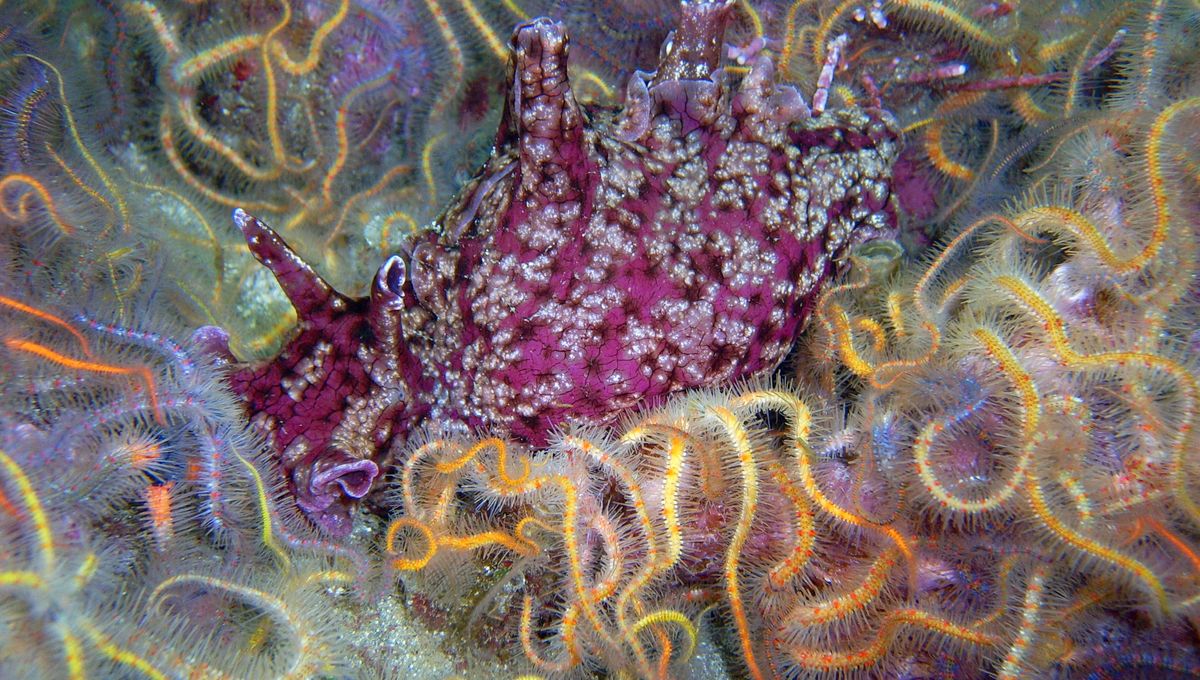
Back in 2018, scientists achieved something that still sounds unbelievable today: they “transplanted” memories from one snail into another. It was a fascinating study in its own right, but it’s also part of a much bigger story: the long-running human quest to understand precisely what memory is and how it works.
How the study worked
The snails in question were not your common-or-garden shelled specimens. These were large marine gastropods in the genus Aplysia, specifically a species called the California sea hare – but we promise they are mollusks and not big-eared hopping mammals.
At first glance, it may not be obvious why the team chose snails for these experiments. However, in reality, there are some striking similarities between the snail and human nervous systems – albeit the snail version has significantly fewer neurons than ours does. Because of this, snails are a very useful model organism for studying not only memory, but other aspects of neuroscience too.
The research team, led by Dr David Glanzman at UCLA, began by training the snails with a series of mild electric shocks to their tails. This primed their withdrawal reflex, a response to stress and danger. Simply tapping the snails was then enough to provoke this reflex, causing them to contract for an average of 50 seconds, whereas untrained snails contracted for just 1 second.
In other words, the snails that had undergone the electric shocks had become sensitized, a simple type of learning. The scientists wanted to see if this sensitization – the memory of the shocks they’d received – could be transferred to another individual.
To test this, they extracted RNA from the nervous systems of trained and untrained snails. Snails were injected with RNA from the opposite experimental group, so untrained snails received RNA from snails that had been treated with electric shocks.
In addition, a similar experiment was conducted using neuronal cells from the snails cultured in a Petri dish.
The results
The experiment worked. Injecting snails with RNA from other snails that had been sensitized was enough to make them exhibit the same behavior.
“It’s as though we transferred the memory,” said Glanzman in a statement at the time.
Snails that received RNA from trained individuals displayed defensive contraction that lasted 40 seconds on average, despite never having received electric shocks themselves.
The experiment in the Petri dishes showed how the RNA treatment from trained snails caused cultured sensory neurons from untrained snails to become more excitable – this is what’s actually going on in the neurons of the snails when they get an electric shock.
In both cases, the control RNA had no effect, showing that it was not the procedure itself that was causing these results.
What it meant
There’s long been a conflict among neuroscientists about what exactly memory is. For more than 100 years, scientists have been engaged in a search for the engram, an elusive concept first proposed by Richard Sermon that describes the physical trace of a memory inside the brain.
The dominant theory for many years held that long-term memory relies on synaptic connections that get strengthened over time as they are repeatedly activated, a process called long-term potentiation.
However, Glanzman was a proponent of an alternative theory, one in which long-term memory was encoded in a series of modifications to an animal’s DNA, known as epigenetic alterations. The results of the snail experiment certainly seemed to support this viewpoint.
“If memories were stored at synapses, there is no way our experiment would have worked,” Glanzman said at the time.
Since the snail memory transplant, other even more radical theories have been proposed. British scientist Dr Ben Goult spoke to IFLScience in 2021 about his MeshCODE theory, in which memory works via a series of protein switches, like having an old mechanical computer inside your head. Goult’s research is ongoing, and his team is only just beginning to scratch the surface of the possible applications.
Other researchers have expanded on the synaptic model, proposing that memories could be stored within the very membranes of our neurons where they meet at synapses. Another bold proposition put forward earlier this year suggests that electric fields within the brain could lead cells to assemble themselves into engrams, a hypothesis called cytoelectric coupling.
Five years on from the snail memory transfer experiment, there are still many open questions, and memory remains a vibrant field of study. Glanzman suggested recently that long-term memory likely relies on a combination of both synaptic plasticity and DNA alterations for more permanent storage.
Research will continue to chip away at this mystery, but one thing’s for sure: we wouldn’t be where we are today without the help of some very special sea snails.
Source Link: How Scientists Managed To Transfer "Memories" Between Snails